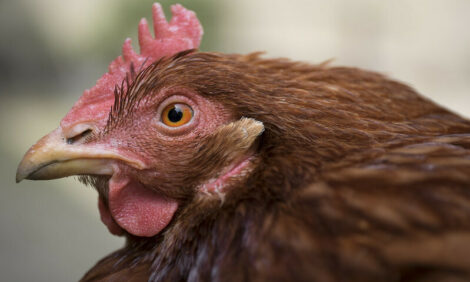



International Egg and Poultry Review
By the USDA's Agricultural Marketing Service - This is a weekly report looking at international developments concerning the poultry industry, this week looking at World Currencies.
World Currencies
The lower valued U.S. dollar relative to currencies of competitors has
aided U.S. export flows. Although the dollar’s value in the first quarter
was slightly higher than a year ago, the currency’s value has depreciated
significantly from the 3-year (2002-2004) average.
On July 21, 2005, China abandoned its eight-year peg to the dollar and
moved to a managed floating exchange rate regime. The Yuan has
risen to a significant degree on average against China’s trading
partners. While strengthening by 2.6 percent against the dollar in the
last half of 2005, when compared against the currencies of all of China’s
trading partners (JP Morgan index) the Yuan appreciated by 4.9 percent
in the second half and more than 9 percent during 2005 as a whole.
The five major economies in Latin America – Argentina, Brazil, Mexico,
Venezuela, and Chile – are all experiencing strong growth. The major
currencies of this region should appreciate relative to the dollar in real
terms in 2006.
As the dollar stabilizes against the Euro, appreciates against the yen,
and weakens against developing nation’s currencies, there is likely to
be a mild decline for the farm trade-weighted dollar in 2006. Thus, the
value of the dollar will continue to support U.S. farm and manufacturing
export growth in 2006, as it did in 2005.
Most U.S. broiler meat shipments in 2007 are expected to go to Russia,
Mexico, China/Hong Kong, the CIS countries, and the Caribbean. A
strong Mexican economy will support continued growth in turkey
demand. In the first quarter of 2006, Mexico accounted for 66 percent of
U.S. turkey exports, and will likely continue to dominate exports through
2007 as well.
Source: Livestock, Dairy, & Poultry Outlook, Outlook for U.S. Agricultural
Trade, Economic Research Service, USDA; Report to Congress on
International Economic and Exchange Rate Policies, U.S. Treasury;
U.S. Federal Reserve.
U.S. Broiler and Turkey Exports Down in April
Broiler exports in April were 441 million pounds, down 6 percent from
April 2005. The decline is largely due to lower shipments to Russia, the
largest U.S. broiler market. Exports to Russia totaled 96 million pounds,
down 44 percent from a year ago. Although April shipments to the next
four largest markets were larger than April 2005, their combined increase
was not large enough to offset Russia’s year-over-year reduction in
U.S broiler meat imports.
For 2006, broiler exports are expected to be 5.5 billion pounds, almost
7 percent above 2005. Next year, exports will likely reach 5.6 billion
pounds, or about 1.7 percent above 2006. Factors assumed to be
driving exports both this year and in 2007 include competitive prices of
U.S. broiler meat, relative to other exporting countries, as well as relative
to prices of other animal proteins. Also, strong economic growth in
such key importing countries as Russia, Hong KongChina, and Mexico
is expected to support consumer demand for U.S. broiler meat. High
energy prices clearly boosts economic growth in both Mexico and
Russia, in particular.
Turkey exports totaled 35 million pounds in April, down 29 percent from
April 2005. The decline is attributable to what appears to be Mexico’s
substitution of attractively priced U.S. broiler meat in place of U.S. turkey.
For 2006, turkey exports are expected to be 574 million pounds, an
increase of almost 1 percent over last year. U.S. turkey exports for 2007
are expected to be 595 million pounds, more than 3.5 percent above
export expectations for this year.
Source: Livestock, Dairy, & Poultry Outlook, ERS/USDA
To view the full report, including tables please click here (PDF Format)
Source: USDA's Agricultural Marketing Service - 20th June 2006








